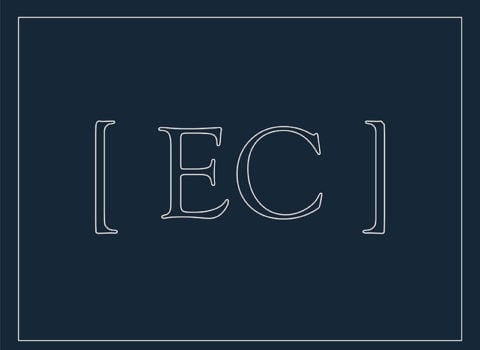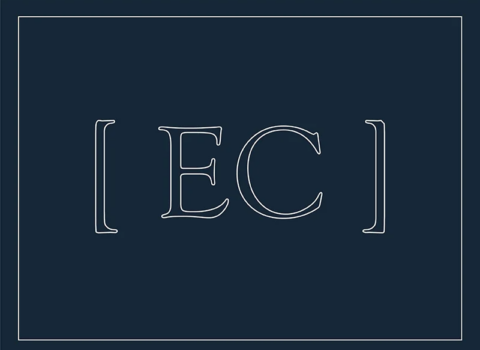On March 14, 2010, the artist Marina Abramovic sat down at a small table in the center of a gallery in the Museum of Modern Art in Manhattan. Visitors were invited to take a seat opposite her and meet her gaze. She remained there for seven hours each day until May 31, a total of seven hundred hours, during which time she silently interacted with more than 1,500 people. In an interview, Abramovic said she was trying to induce an “experience of the here and now.” The piece was called The Artist Is Present.
During a private viewing one evening before the show opened, the scene had something of the royal pageantry of early modern Europe. Here was the queen holding court in her presence chamber, lording it over her art-world supplicants. New York’s cultural notables were being blessed or knighted, infused with the divine mana of creativity. In the following weeks, Abramovic’s performance became an event, arguably the last great art spectacle of the pre-Instagram era. The social-media app was launched months later, in October 2010, and within a few years would force global visual culture into the straitjacket of its thumbnail grid. Abramovic’s performance had a graphic aesthetic—a long gown, a big gray space—and offered the opportunity for observers to become participants, to “have a moment.” We now recognize both these qualities as drivers of the new attention economy, and in retrospect, The Artist Is Present feels like a harbinger of what was going to happen to the art world—and to the culture more generally. “Have you sat?” was a question people asked each other. Celebrities sat. Other famous artists sat. People began to camp out in front of the museum. A blog called Marina Abramovic Made Me Cry helped to distill the idea that the right way to respond to the piece was to be moved to tears. Abramovic’s performance promised direct contact with the artist and the creative or existential authenticity she represented. For many people, this was (or at least appeared to be) an experience of profound, even shattering intensity.
I never sat. I wish I had, but at the time I was more interested in the spectacle than in the possibility of communion—or, at least, not interested enough to want to spend an uncomfortable night on a Midtown sidewalk. On its last evening, I returned to find that the scene inside the museum had mutated from royal court into a chaotic festival or perhaps a pilgrimage site. The Artist Is Present had generated its own culture. There were regular sitters, like a makeup artist who took twenty-one turns. There was a self-proclaimed leader, who had apparently spent days at the museum disputing protocol with the guards. As we angled for a view of Abramovic, an older woman asked a girl in a spandex skeleton suit to sit down because she was blocking her view. The girl retorted scornfully that she was “looking for her camp.” “Some of us,” she said, had “been here for forty-eight hours.”
The last sitters arrived. Some placed their hands on their hearts. Others nodded, affirming whatever message they were receiving from the silent woman opposite them. I saw several people willing themselves to cry, breathing rapidly and squirming, as if trying to manifest the experience they were supposed to have.
Abramovic comes from a tradition of performance that valorizes extreme effort and duration. The physical and mental difficulty of what she was doing was matched by an ethical feat—the attempt to be fully present for hundreds of strangers, to be “here and now” with them, day after day. The various characters who arrived out of the city’s nooks and crannies late in the performance’s run were the flip side of the beatific images of ordinary people in tears. All this noise and drama surrounded a gesture that stripped human interaction down to its essence. As the philosopher Emmanuel Levinas wrote about the face-to-face encounter, which he considered the foundation of all ethical experience, “naked and defenseless, the face signifies, with or without words, ‘Do not kill me.’ ”
An account of Abramovic’s performance opens Immediacy, or The Style of Too Late Capitalism, a recent book by Anna Kornbluh that identifies an aesthetic of immediacy as the dominant response to a world that feels increasingly distant, lost in a fog of virtuality. Kornbluh sees the desire for immediacy at work in all sorts of cultural forms, from #NoFilter hashtagging to faux-amateur, shaky camerawork in big-budget cinema. It’s at play in the personal essay and the live acoustic set, and in the desire for “experiences.” Eating at a restaurant is a “dining experience.” A BMW is the “ultimate driving experience.” So-called experiential marketing gives us everything from the “Barbie selfie generator” (you are a character in the movie) to immersive M&M pop-ups.
This isn’t actual immediacy. The candid image, the ultimate water-park experience, and the apparently unedited text are all just as mediated as anything else. This is immediacy as style, a way to signify presence or proximity to reality, or at least the desire to have such things. The vogue for so-called autofiction, a literary genre in which authentic-seeming experiences are recounted in a first person that has a nebulous but close relationship to the author, took hold in the English-speaking world during the 2010s, following the publication of the early volumes of Karl Ove Knausgaard’s My Struggle, a 3,600-page bildungsroman that follows the author through a lightly modified version of his childhood, adolescence, marriage, and literary apprenticeship. The project was set in motion when Knausgaard, who had published two prior novels, found that all he could stomach were diaries and essays, “the types of literature that just consisted of a voice, the voice of your own personality, a life, a face, a gaze you could meet.” He was unable to continue: “Just the thought of a fabricated character in a fabricated plot made me feel nauseous.”
Knausgaard gave depth to the quotidian problems of his life, from premature ejaculation to childcare, his cheeky Hitlerian title acknowledging the absurd self-aggrandizement of his project. His disgust with fictionality hit a nerve among American writers. Suddenly novelists who had previously seemed entirely comfortable with making stuff up declared that they too were disgusted by the artificiality of narrative invention, and they turned to writing first-person stories in which not much happened. Some of these texts had a “literary” style. Others, particularly those associated with the Alt-Lit scene, were built out of deliberately flat or uninflected prose. One of the more extreme documents of this second tendency is Megan Boyle’s Liveblog, an online project that was published as a book in 2018. It recounts the day-to-day minutiae of the author’s life during part of 2013, proceeding in time-stamped sections, sometimes dozens a day. “this is not going to be interesting,” Boyle warns the reader in the first paragraphs of her seven-hundred-page text, which is subtitled “A Novel.” “i am not going to try to make this sound interesting or try to make you like me or think about if you are reading this or enjoying reading this.” Her purpose is to make “a functional thing that will hopefully help me feel more like improving myself.”
The readerly “you” whom Boyle scrupulously ignores is treated to an endless scrolling account of snacks eaten, prescription drugs swallowed, teeth brushed or not brushed, emails sent, TV game shows watched, and summaries of conversations with her friends. For example, on April 29, 2013:
5.53pm: impulsively texted Zachary to see if he knew where to buy cat food, am now picking him up from Adam’s.
6.10pm: need to get electric switched over to my name, change address, feel hollow and scared and alone, driving, picking up Zachary, what will we do, what’re we doing here, what the shit hell . . .
Whether you find the accumulation of inconsequential detail enervating or oddly hypnotic (or both, which was my experience), it’s clear that as a literary style, the casual, Notes-app prose and the ostensible lack of intervention in the material is intended to signal that this text is more like life than literature. It is raw, not cooked, an act of face-to-face communion with the author.
So why is there such desire for immediacy in the culture? Why is it being signaled in so many different ways? Kornbluh suggests that immediacy reflects the “intensification of circulation”—the sense we have that we’re experiencing an acceleration of the flow of images, information, capital, and perhaps even of social or historical events. In this account, the immediate style, in all its forms, has emerged because it acknowledges that the world is too much to get a handle on—that there’s no way to step outside, let alone shape or form it artistically. All you can authentically do is reproduce the flow, make your art as much like life as possible. If there’s a problem with immediacy as a style, it’s that it abolishes critical distance. Instead of an interrogation of reality, which is surely one of the jobs of art, there’s just affirmation, clicks and likes, a big thumbs-up for things just as they are. “Immediacy writing is too close with us,” Kornbluh writes. “It’s suffocating.”
In “Mr. Bennett and Mrs. Brown,” an essay about the generational shift between the writers of the Edwardian period and the literary modernists who succeeded them, Virginia Woolf asserts that “on or about December 1910 human character changed.” The line has always been remembered less for the content of its claim than for its amusing specificity—the idea that something so vast and nebulous as a change in “human character” could be precisely dated. In a similar spirit, you could make the case that on or about June 2016, shared reality changed—or, rather, was cast radically into doubt. That year, Instagram, Facebook, and Twitter introduced the algorithmic feed. Instead of displaying content in chronological order, social-media platforms started trying to guess—and mold—our experience by pushing some things and suppressing others, according to rules and procedures that they keep closely guarded.
The results have been subtly yet deeply damaging to the integrity of our information environment. The shift from chronological to algorithmic timelines introduced a layer of paranoia, a little loop of doubt through which we now have to pass. Why am I being shown this? We (well, some of us) had already learned to be skeptical of what we saw. We asked for sources; we said to each other, That looks ’shopped. The question of why an algorithm should choose to show us a certain post adds another layer to this skepticism, one that’s usually impossible to resolve. Maybe the answer is banal (because you clicked on the last fifteen pictures of hi-fi speakers it showed you), but maybe not. We’re aware that agents of all kinds are trying to manipulate our perceptions for their own commercial or political ends. Outside the sphere of social media, algorithmic decisions are shaping our social world, from loan decisions to target identification in Gaza. As this layer of mediation takes shape around us, is it any wonder that immediacy emerges as a style? We want spontaneity, authenticity, the chance to meet each other face-to-face. We can still have that, can’t we? Can’t we?




